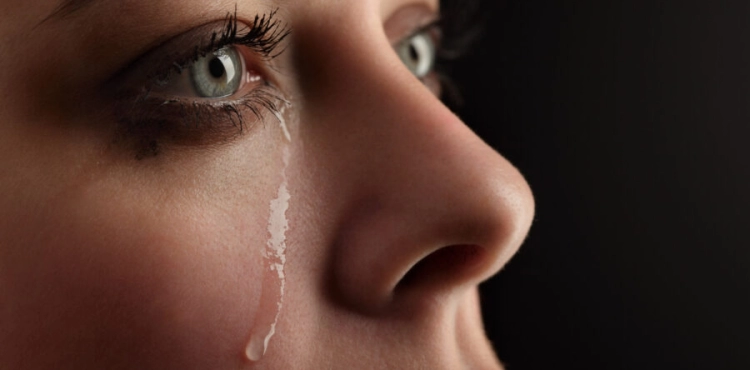Man has been crying since the dawn of history, with 70 to 100 liters of tears flowing from his eyes over the course of his life, but experimental research on the phenomenon of crying is shockingly limited.
A recent systematic review showed that the topic has "surprisingly not received enough attention from scientists, or physicists," and that "emotional crying" research is still in its infancy. Study co-author Ad Fingerhuts believes there is a misunderstanding behind it.
Psychologists from the Netherlands, after studying for the past twenty years why people cry, say: “Tears are often seen as a sign of sadness,” but these tears “not only contain a lot of information about the current situation, but also reveal a lot.” about us as people.”
It seems that man is the only being who cries out of strong emotion. In addition to emotional tears, there are two other types: reflex tears caused by an external stimulus such as peeling onions, and basal tears that clean and moisturize the eyes.
The three types include water, electrolytes and proteins, but in different concentrations. Emotional tears have more proteins than reflexive tears, and also have higher amounts of serotonin, for example.
One possible answer to why people cry is cheating. British researchers reported in a 2007 study that six-month-old infants use tactical crying to get parents´ attention.
For Fingerhuts, this stage of life offers a possible evolutionary explanation for emotional crying. Scientists agree that human crying can be traced back to the "separation calls" that are observed in all mammals and are a visible sign in addition to vocal calls.
However, man still cries in adulthood, even when it has become possible to control life completely, unlike childhood. There is a difference between how often men cry, compared to women, as men cry from six to 17 times a year, according to the German Ophthalmological Association, while women cry at a rate four or five times higher.
And these differences only happen when people get older. Even 13 girls and boys cry the same amount, and for the same reasons.
Wengerhuts says that the biggest causes of crying - sadness, longing for home and love problems, for example - are the same for men and women. In everyday situations, however, women are more likely to cry in the face of criticism or in the midst of conflict. This may indicate internal feelings of helplessness among women, while men tend to avoid such situations.
Wengerhuts does not believe in the explanation that crying helps people feel better, and explains: "For a person to feel better after crying, several factors must be met, such as having a stable general psychological state."
Many studies have shown that people with depression, for example, do not find an outlet in crying. Traumatic and uncontrollable experiences, such as the death of a loved one, do not improve with crying!












